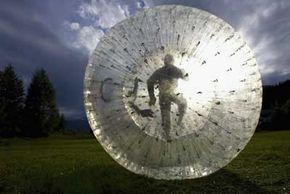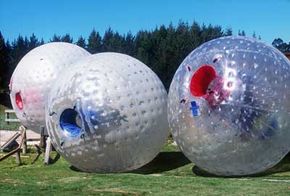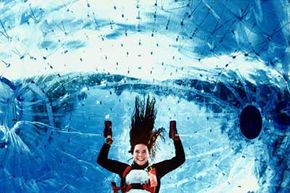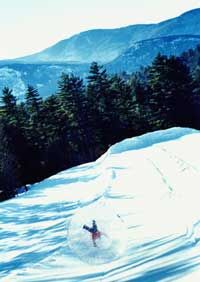It's spherical. It's plastic. It's much larger than a beach ball. And, it's about to roll down a grassy slope with a passenger inside.
The zorb tumbled into existence in the mid-1990s in New Zealand, hitting the extreme sport scene in 1998. What has now become a worldwide phenomenon is a simple ride inside a plastic ball down a grassy -- or even snowy -- slope. In areas where there are no natural hills, zorb operators may build a metal track down which the zorb rolls. Although zorbing takes place on land, it can be a wet and wild experience when water is added to inside of the ball for the ride.
Advertisement
A zorb is actually two separate balls, both made of flexible plastic. The outer ball is around 9 feet (2.7 m) 8 inches (20 cm) in diameter. The inner ball, which can accommodate one to three passengers, is about 6 feet (1.8 m) 6 inches (15 cm). This leaves roughly 2 feet (60 cm) of air to absorb the shock for the riders as they make their way downhill.
The zorb is made of a 0.8 millimeter thick, transparent but strong plastic. The inner and outer balls are connected by hundreds pieces of rope, which keeps the balls turning together. The average zorb has one or two openings through which the rider enters and exits. The openings are normally around 2 feet (60 cm) wide. They not only provide an entrance and exit, but ensure that the passenger has plenty of oxygen for the breathtaking ride.
Advertisement



